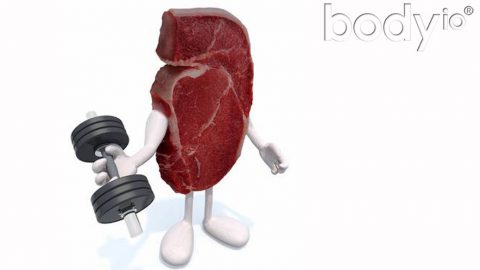Disclaimer
Ireally hate running. Seeing it come under fire in recent years has brought me great joy, as more people are stepping off the treadmill and onto the platform. They’re ditching their high-heeled anti-orthotics for lower rise shoes, or even completely flat shoes that allow your feet to do what they were meant to do: transfer kinetic energy.
However, like most things in the constant flux of extremes and polarities that is the fitness world, it’s gotten out of hand. In one of Kiefer’s articles, Why Women Should Not Run, he goes into detail on how excessive endurance training can negatively affect thyroid health, disrupt hormonal synergy, and prevent fat loss and muscle gain. In this article, I’m going to bring some context to these cases in hopes that we can shed some light on how to reap the benefits of running, while still protecting our health and ensuring our progress.
Definitions
Running is the act itself, much like weightlifting is the act of lifting weights. Weightlifting has become synonymous with Olympic weightlifting in the same way that running has become synonymous with jogging. When you’re powerlifting you’re still weightlifting – when you’re sprinting, you’re still running. The context you’re looking for will depend on the application of velocity.
In Olympic weightlifting, more velocity is applied than in powerlifting; when sprinting, you apply more velocity than when jogging. Understanding this can change the way we view exercises based on individual needs and preferences. It’s important to remember that these things are relative. I’m not weak or slow (until I’m next to the right people), but there are people whose jogging pace rivals my sprinting pace. It’s all a matter of how you tune and train yourself.
Research shows that the higher the intensities at which you run, the greater the health benefits[1]. Does this mean we should sprint every day? Since duration and intensity have an inverse relationship, you should focus on shorter runs, as this allows the intensity to stay high. You also get the added benefits of melting away body fat, increasing insulin sensitivity, and whole body substrate utilization[2-4]. By using events, tempos, and intervals that take advantage of this, we allow our bodies to work at higher intensities, while still recovering enough to do more overall work. This has been used since the 1950s by Olympic champions, such as Emil Zatopek, who broke the world record in the 5km, 10km, and marathon. Not only is this proven in practice, it’s also scientifically proven[5,6].
Application
So how do we apply this knowledge correctly in the right circumstances? People who are overweight or recently sedentary need to be careful with higher intensity exercises that use bodyweight as resistance. For these people, sprinting is dangerous and needs to be eased into. For the rest of you, adopting shorter running times and focusing on the following will be highly beneficial:
Steady State Runs – Focus on improving these events
• Mile runs
• 5km runs
Interval Runs – Feel free to adjust this to your level of fitness, always trying to improve your times
• 4-10 sets
• 30s – 4 mins work, depending on goal
• Rest can vary from 3:1, 2:1, 1:1, 1:2, 1:3, all the way to full recovery
• Use complexes to target multiple energy systems and lengthen the total training session to get a stronger aerobic benefit, for example:
o 3 sets of 3 mins work with 1 min rest, followed by 6 sets of 20s work with 20s rest
o Remember, what you do first will always get a stronger training stimulus
o This will also leave you with a stronger hormonal response to training, which is important if you wish to retain as much muscle and lose as much fat as possible.
• If you want to run longer than the suggested times, a good strategy is to split the workouts into 2 sessions for increased fat burning[7]. Make sure you do not consume carbohydrates after the first session to ramp up mitochondrial biogenesis during the second session[8].
Final Thoughts
With intelligent program design and being smart about individual progression, it’s easy and convenient to incorporate running into your routine. Jogging has much less importance for trained and non-sedentary people, but it is absolutely essential for overweight or sedentary populations easing into running. However, it should be looked at as a means to an end, not as an exercise to incorporate into your everyday life or as a tool to eliminate body fat.
The above protocols can be used in any conditioning activity, not just running, although it is important to remember that running is a basic human skill and needs to be utilized sometimes, most notably in case of danger. Mark Rippetoe said, “Strong people are harder to kill,” but I’d like to bring this argument to a close with a related pearl of wisdom from Al Davis: “Speed Kills.”
[expand title=”References (click to expand)”]
- Williams, P. (n.d.). Relationship of Running Intensity to Hypertension, Hypercholesterolemia, and Diabetes. Medicine & Science in Sports & Exercise, 1740-1748. https://www.ncbi.nlm.nih.gov/pmc/articles/PMC2803745/
- Kim, J., Lee, N., Trilk, J., Kim, E., Kim, S., Lee, M., & Cho, H. Effects of Sprint Interval Training on Elite Judoists. International Journal of Sports Medicine Int J Sports Med, 2011; 929-934. https://www.thieme-connect.de/DOI/DOI?10.1055/s-0031-1283183
- Richards, J., Johnson, T., Kuzma, J., Lonac, M., Schweder, M., Voyles, W., & Bell, C. Short-term sprint interval training increases insulin sensitivity in healthy adults but does not affect the thermogenic response to β-adrenergic stimulation. The Journal of Physiology, 2010; 2961-2972. https://onlinelibrary.wiley.com/doi/10.1113/jphysiol.2010.189886/full
- Perry, C., Heigenhauser, G., Bonen, A., & Spriet, L. (n.d.). High-intensity aerobic interval training increases fat and carbohydrate metabolic capacities in human skeletal muscle. Appl. Physiol. Nutr. Metab. Applied Physiology, Nutrition, and Metabolism, 1112-1123. https://www.ncbi.nlm.nih.gov/pubmed/19088769
- Billat, L. (n.d.). Interval Training for Performance: A Scientific and Empirical Practice. Sports Medicine, 13-31. https://www.ncbi.nlm.nih.gov/pubmed/11219499
- Billat, L. (n.d.). Interval Training for Performance: A Scientific and Empirical Practice. Sports Medicine, 75-90. https://www.ncbi.nlm.nih.gov/pubmed/11227980
- Goto, K., Ishii, N., Mizuno, A., & Takamatsu, K. Enhancement of fat metabolism by repeated bouts of moderate endurance exercise.Journal of Applied Physiology, 2007; 2158-2164. https://jap.physiology.org/content/102/6/2158
- Cochran, A., Myslik, F., Macinnis, M., Percival, M., Bishop, D., Tarnopolsky, M., & Gibala, M. (n.d.). Manipulating Carbohydrate Availability Between Twice-Daily Sessions of High-intensity Interval Training Over Two Weeks Improves Time-trial Performance. IJSNEM International Journal of Sport Nutrition and Exercise Metabolism. https://www.ncbi.nlm.nih.gov/pubmed/25811132
[/expand]












